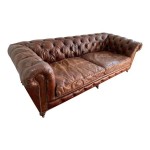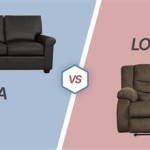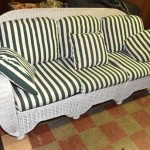Parts of a Sofa Diagram
Understanding the various components of a sofa can be beneficial when selecting a new piece for a living space, troubleshooting issues, or even simply appreciating the craftsmanship involved. A sofa diagram can provide a valuable visual representation of these components, allowing for a more comprehensive understanding of its construction and functionality.
Generally, a sofa can be broken down into three primary sections: the frame, the support system, and the upholstery. Each section plays a crucial role in the overall comfort, durability, and aesthetic appeal of the sofa.
The Frame: This foundational element provides the sofa's structural integrity. Common frame materials include hardwood, softwood, plywood, and engineered wood. Hardwoods, such as oak and maple, are generally considered more durable and long-lasting. Softwoods like pine are more cost-effective but may not offer the same longevity. Plywood and engineered wood offer a balance between cost and durability. A sofa diagram will typically illustrate the frame's construction, highlighting key joints and structural supports.
The Support System: This system is responsible for providing comfort and preventing sagging. It typically consists of springs, webbing, or a combination of both. Traditional spring systems utilize sinuous springs (also known as S-springs) or eight-way hand-tied springs. Sinuous springs are pre-formed, zig-zagging pieces of metal that offer a firm, consistent support. Eight-way hand-tied springs are individually tied to the frame and offer a more responsive, luxurious feel, though they are generally more expensive. Webbing, typically made of jute or other strong materials, offers a more affordable and often firmer support option. A sofa diagram will typically detail the type and arrangement of the support system.
The Upholstery: This encompasses all the materials covering the frame and support system, contributing significantly to the sofa’s comfort and visual appeal. It consists of several layers: padding, cushioning, and the outer covering. Padding, often made of materials like cotton or polyester batting, provides a soft layer over the frame and springs. Cushioning, which provides the primary seating comfort, can be filled with various materials, including foam, down feathers, polyester fiber, and a blend of these materials. Each filling material offers different levels of comfort, support, and resilience. The outer covering, the most visible part of the upholstery, can be made from a wide range of fabrics, including leather, microfiber, velvet, and linen, each with its own unique properties regarding durability, maintenance, and aesthetics. A detailed sofa diagram will often identify the types of materials used in each layer of the upholstery.
Beyond these primary sections, a sofa diagram can also highlight other important components. These include the legs, which contribute to the sofa’s stability and style, available in various materials and designs. Armrests, another essential element, provide comfort and support and can vary in shape, size, and padding.
Understanding a Sofa Diagram: Front View. A front view diagram will showcase the overall shape and dimensions of the sofa, including the width, height, and depth. It will also highlight the style and shape of the arms, the type of legs, and the skirt, if present. The front view provides a clear picture of the sofa’s aesthetic presentation.
Understanding a Sofa Diagram: Side View. The side view diagram offers a valuable perspective on the sofa’s profile. It displays the height and depth of the seat cushions, the angle of the backrest, and the height and design of the armrests. This view can be particularly helpful in assessing the sofa’s comfort and ergonomic design.
Understanding a Sofa Diagram: Top View. A top view diagram illustrates the overall shape and dimensions of the sofa, including the width and depth of the seating area and the shape and placement of the back cushions. This view is helpful for understanding the sofa’s footprint within a room.
Understanding a Sofa Diagram: Cross-Section View. A cross-section view provides a detailed internal view of the sofa’s construction. It clearly shows the layers of upholstery, including the padding, cushioning, and frame. This view allows for a detailed understanding of the materials and construction techniques used, which is essential when evaluating the sofa’s quality and durability. It will also clearly depict the support system, whether it uses springs, webbing, or a combination of both.
Ultimately, a well-labeled sofa diagram can offer a comprehensive understanding of its construction, materials, and features. This knowledge is invaluable when making informed decisions about purchasing a sofa that meets specific needs and preferences, and can also be helpful in understanding how best to care for and maintain the sofa for long-lasting comfort and enjoyment.

Image Result For Parts Of A Sofa Interior Design Instagram Images Furnishings

The Many Parts Of A Couch 2 Ilrated Diagrams Drawing Furniture Sofa Living Room Design

What Are The Parts Of A Leather Sofa Currier S Real Furniture

The Many Parts Of A Couch 2 Ilrated Diagrams Furniture Details Design Luxury Sofa Drawing

Construction Diagram For A Sofa Stanton Sofas At Rife S Home Furniture Dining Chair Upholstery Frame

Info Diagram Dining Chair Upholstery Sofa Frame Construction

American Craftsmanship Huntington House Furniture

Furniture Detail Drawing Google Search Details Design Chair

Schematic Of A Three Seat Sofa Frame Side Rail To Back Post Scientific Diagram

Www Sofa Com








